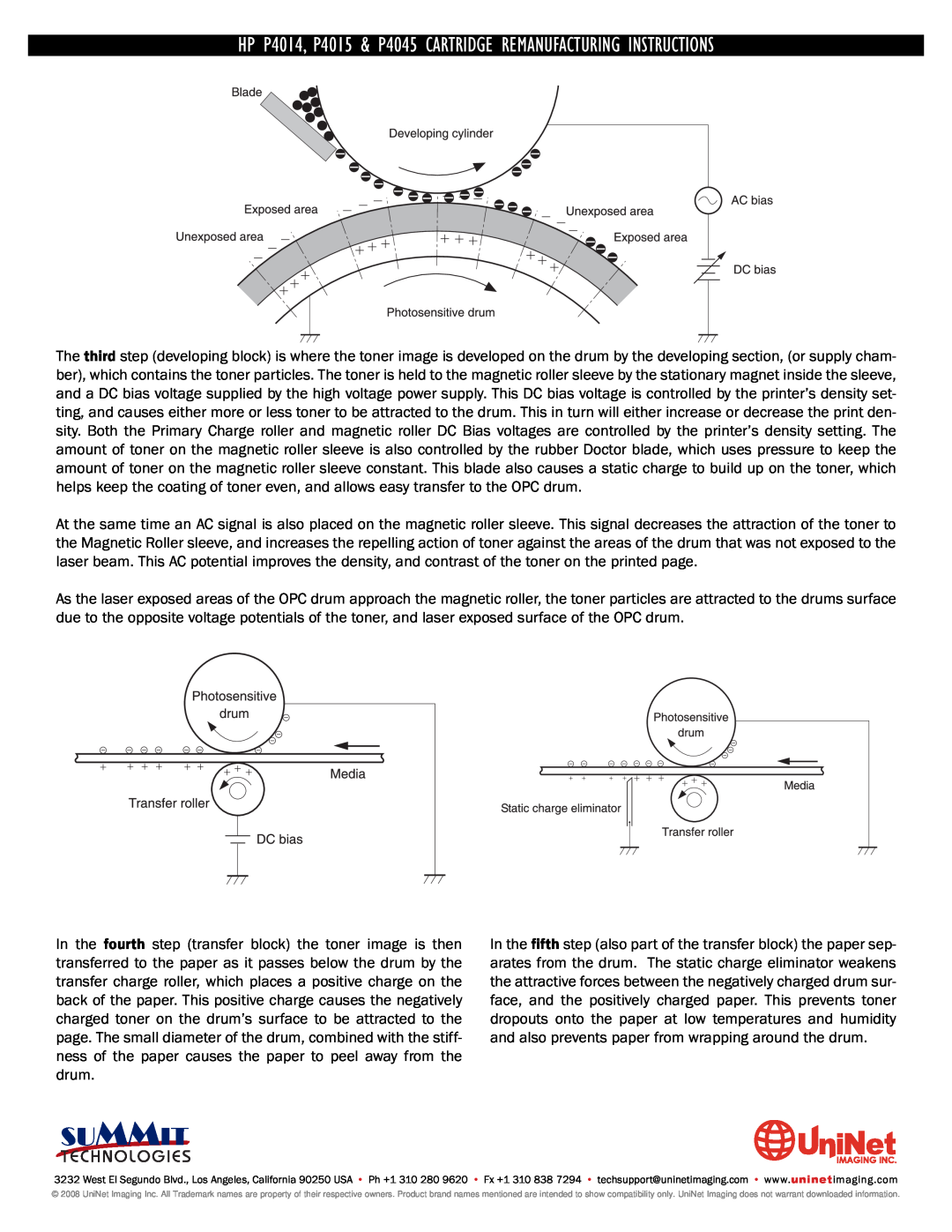
UNINETIMAGINGHP P4014,INCINC. . •P4015• BROTHER& P40451240/1650CARTRIDGE REMANUFACTURING• • DISASSEMBLINGINSTRUCTIONSTHETHETONERCARTRIDGE
The third step (developing block) is where the toner image is developed on the drum by the developing section, (or supply cham- ber), which contains the toner particles. The toner is held to the magnetic roller sleeve by the stationary magnet inside the sleeve, and a DC bias voltage supplied by the high voltage power supply. This DC bias voltage is controlled by the printer’s density set- ting, and causes either more or less toner to be attracted to the drum. This in turn will either increase or decrease the print den- sity. Both the Primary Charge roller and magnetic roller DC Bias voltages are controlled by the printer’s density setting. The amount of toner on the magnetic roller sleeve is also controlled by the rubber Doctor blade, which uses pressure to keep the amount of toner on the magnetic roller sleeve constant. This blade also causes a static charge to build up on the toner, which helps keep the coating of toner even, and allows easy transfer to the OPC drum.
At the same time an AC signal is also placed on the magnetic roller sleeve. This signal decreases the attraction of the toner to the Magnetic Roller sleeve, and increases the repelling action of toner against the areas of the drum that was not exposed to the laser beam. This AC potential improves the density, and contrast of the toner on the printed page.
As the laser exposed areas of the OPC drum approach the magnetic roller, the toner particles are attracted to the drums surface due to the opposite voltage potentials of the toner, and laser exposed surface of the OPC drum.
In the fourth step (transfer block) the toner image is then transferred to the paper as it passes below the drum by the transfer charge roller, which places a positive charge on the back of the paper. This positive charge causes the negatively charged toner on the drum’s surface to be attracted to the page. The small diameter of the drum, combined with the stiff- ness of the paper causes the paper to peel away from the drum.
In the fifth step (also part of the transfer block) the paper sep- arates from the drum. The static charge eliminator weakens the attractive forces between the negatively charged drum sur- face, and the positively charged paper. This prevents toner dropouts onto the paper at low temperatures and humidity and also prevents paper from wrapping around the drum.
SUMMIT
3232 West El Segundo Blvd., Los Angeles, California 90250 USA • Ph +1 310 280 9620 • Fx +1 310 838 7294 • techsupport@uninetimaging.com • www.uninetimaging.com
© 2008 UniNet Imaging Inc. All Trademark names are property of their respective owners. Product brand names mentioned are intended to show compatibility only. UniNet Imaging does not warrant downloaded information.
